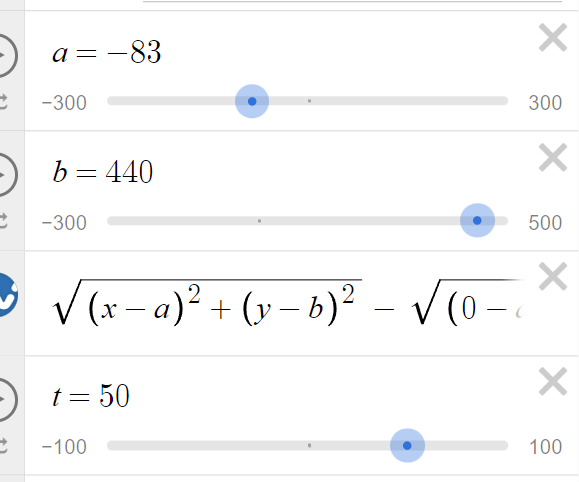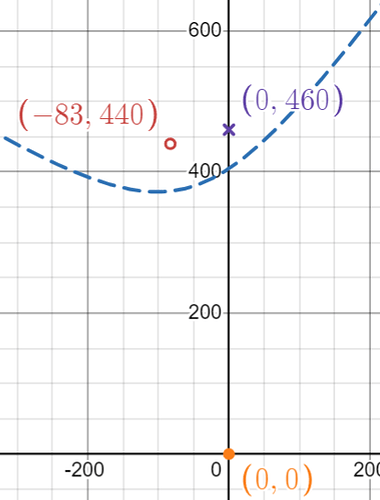Use GPS-like math to find Source of Unknown Sound.
Interactive graphic on Desmos.
For this analysis, just consider the relative time stamps for each shot for Trump’s microphone compared to any other microphone. Just the report, not the sonic boom. But for this, we need the second microphone to be stationary.
I set up a graph in Desmos which is interactive, link below.
NOTE: I don’t have precise real data numbers, so I just made rough guesses, but the details can easily be tweaked with more accurate measurements.
I used the following coordinates:
(0,0) is Trump’s microphone, aka mic1 (Orange dot, of course Orange!)
(0,460) is Crooks’ position (Purple X) (e.g. about 460 feet North)
(a,b) is the position of a second microphone, aka mic2 (Red circle)
(x,y) is the position of a second shooter. (dashed Blue line)
t is the “time gap difference” defined below
For example, to locate the officer who fired shot 9, take the time difference between shots 8 & 9 for Trump’s microphone and for the second microphone.
Start with the 9-8 time segment measured from the second microphone then subtract the 9-8 time segment measured from Trump’s microphone. Call this the “time gap difference” which I’m calling ‘t’. Measure t in milliseconds. And if sound travels 1200 ft/sec then it travels 1.2 feet each millisecond.
Suppose the 9-8 gap time is 50 msec longer measured at mic 2 than it was measured at Trump’s mic. So maybe the sound from a second shooter took an extra 120 msec to reach mic2 but it took an extra 70 msec to reach mic1. Or maybe it took an extra 20 msec to reach mic2, but it got to mic1 30 msec sooner. We can’t measure the absolutes from two microphones, only the relative amount.
But we can define a locus of points that satisfies the constraint of being 60 feet (50 msec * 1200 ft/sec) farther from mic2 than it is from mic1.

Plug in the time gap difference by sliding the slider bar for ‘t’.
As you vary t, watch the change in the locus of points (dashed Blue line) where the second shooter could be located.
If you have 3 or more microphones with known and fixed locations, one should be able to locate the location of the unknown sound. Whatever the level of precision for measuring time in msec, multiply that by 1.2 to get the precision in feet. However that is probably overwhelmed by the uncertainty of microphone location and the possibility that mic2 moved between shots.
Formula for finding the locus of points. A long expression is set equal to t which is in msec. But this is multiplied by 1.2 to get feet.
UNK is unknown shooter location (x,y)
C is Crooks at (0,460)
mic2 is (a,b)
mic1 is (0,0)
d(loc1, loc2) is distance from loc1 to loc2
(d(UNK,mic2) - d(C,mic2)) - (d(UNK, mic1) - d(C, mic1)) = 1.2t
distribute the minus sign and remove unneeded parentheses
d(UNK,mic2) - d(C,mic2) - d(UNK, mic1) + d(C, mic1) = 1.2t
You could do the same for the time gap differences between shots 3 and 4.
